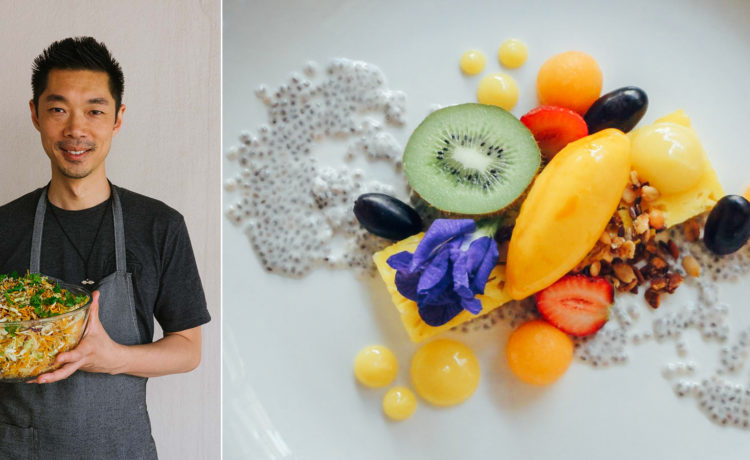
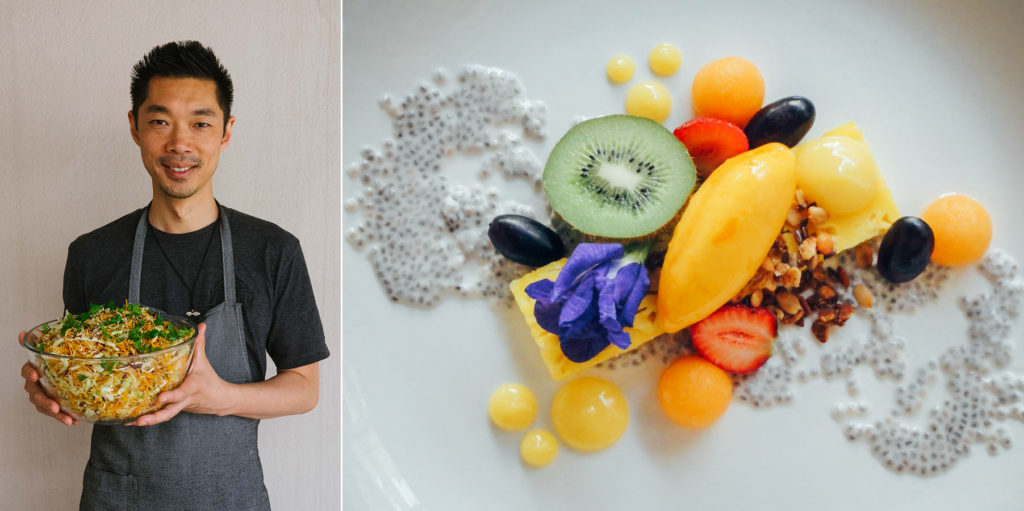
For our 2018 season opener, Tapestry Suppers is proud to present the legendary Canadian artist and chef, Sam Shem who will offer a 6-course vegetarian tasting menu featuring flavors inspired by his personal journeys of food and travel.
Dream of the Other is an exploration of self, home, longing and nostalgia; and how our experiences shape the way we see, taste and design food. It is a attempt to look through the eyes or senses of another subject, so that we can see and taste a different perspective. To experience flavors and memories through another’s interpretation through the medium of food. Sam’s work explores a rich and wide landscape of flavors and textures in a personal but contemporary context. This event will showcase a menu of both sweet and savory compositions inspired over the course of his world travels of the past eight years.
Read on to learn more about Sam or get your tickets here to join us on April 28.
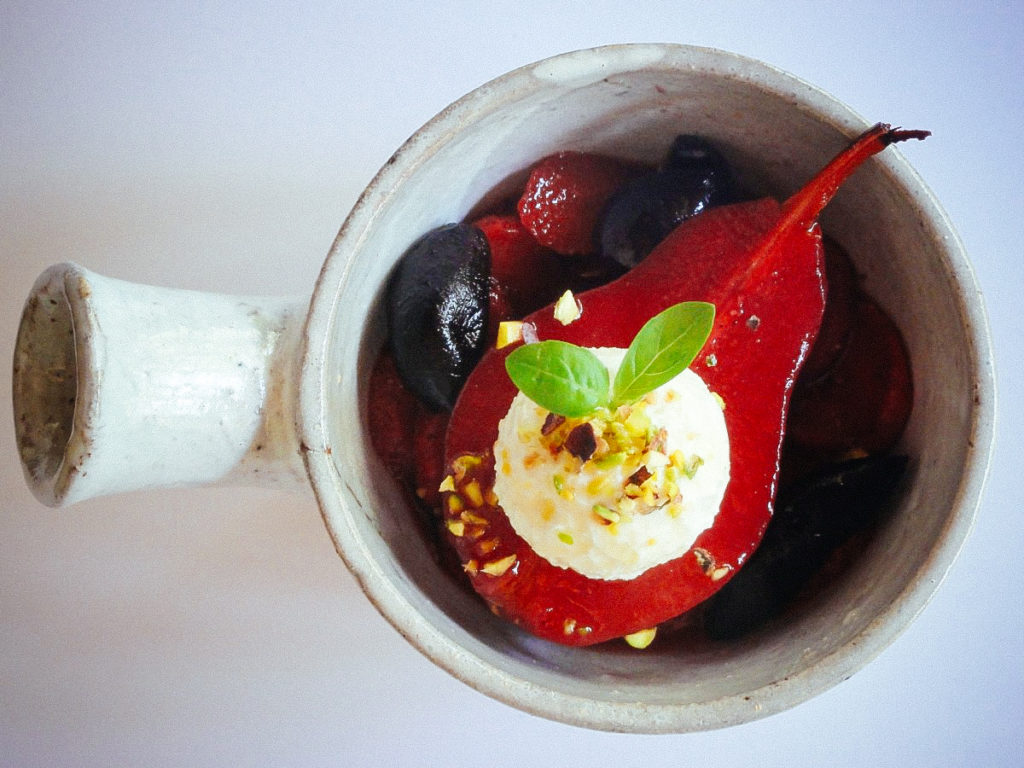
“Dream of the Other is an exploration of self, home, nostalgia and longing” – tell us more about these words…
Being Chinese-Canadian, I have always in a sense lived between cultures, never really fitting into either. I think many immigrants have similar experiences with this, along with recognizing that the notion of ‘Self’ is one that continually evolves and changes. It is a construct that we can create and recreate as much as we like, depending on the context we’re in. It is only when we let ourselves be defined by others that one can get stuck, feeling the pressure to fit into one cultural identity or another.
Currently my notion of self and home is one that is fluid. I have been travelling for such a long time that I feel a connection with those places where I’ve lived in for more than three months. They have a history, memory and a familiarity that once I land, feels like a continuation of a friendship that you can pick up, with no judgement and continue with where you left off.
The geography of food within a city creates a very unique marker in my memory, one that is intrinsically tied to both longing and nostalgia. Food can bring us back to an exact time and place. It can conjure up memories from our youth and past. Food can also propel us into the future and anticipate what is to come. There are so many interesting chefs, food engineers and artists, experimenting and posing a plethora of questions like, “What is food, what is a meal, what do we need to eat to survive, what is actually healthy for us?”.
It is this spirit of questioning that I find both interesting and relevant. I am an individual and artist who is invested in critical investigation and engagement. It is with interest, passion and curiosity that I love discovering new ingredients, foods and ask questions like, “Why can’t these things go together?”.
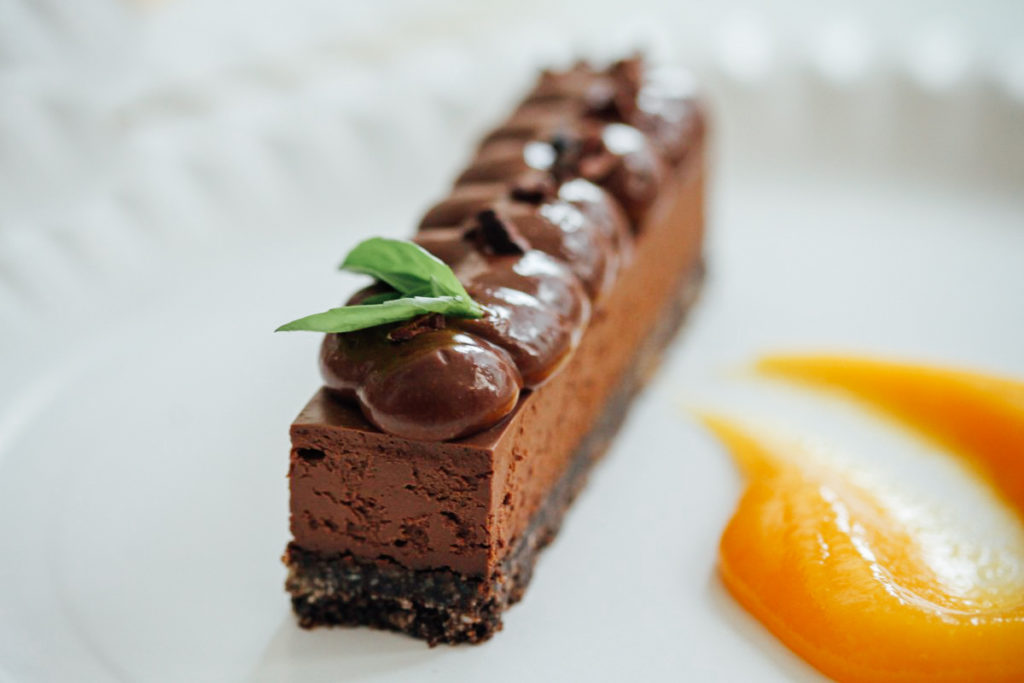
Where did you grow up? Where did your family move from and when did they move to Canada?
My mother was born in Hong Kong and my father was born in Shanghai. They lived in Hong Kong and moved to Canada in 1976, with my three older siblings. That same year on New Year’s Eve, I was born. During my parents’ first years in Canada, we moved from Edmonton to the North West Territories, Vancouver and finally to the quiet town of Port Alberni on Vancouver Island, where I spent most of my childhood. It wasn’t until my teens when my parents decided to move back to Vancouver. The demographics in Vancouver were different from Port Alberni. I went from having no Asian friends, to the majority of my friends being Asian. This played a huge influence in my academic studies and coming to terms with my identity.
Are there any specific moments in your past that shaped your relationship to food?
One memory that comes to mind is when I was in Grade 3 and some mothers of a small group of Indian children at our elementary school decided to cook for the whole school. I think it was some kind of cultural awareness day and we were likely celebrating Diwali. These mothers made tables and tables of food: Curries, Vegetables, Roti’s, Chutneys and Sweets. I remember tasting the food and my taste buds going crazy. I fell in love with the flavors and spices and the simplicity and brilliance of flat breads like roti and chapati. It was definitely a defining food moment and the moment I fell in love with Indian food.
I attended art school at Emily Carr Institute of Art and Design (now known as Emily Carr University) on Granville Island, which houses the Granville Island Market, a specialty market with a good range of ingredients and local produce. Being surrounded by an abundance of quality, beautiful ingredients was also an influence on me.
While at art school, my friends and I would go eat everywhere and everything. I was enthralled with Mexican, Lebanese, Mediterranean, French, Japanese, Thai and Indian Food. This was really a time of culinary exploration that turned into an obsession in my early 20’s and eventually morphing into research, like searching for the best cheesecake or sushi or tacos or bowl of ramen. I didn’t realize it at the time, but I was building up an archive of experiences, ingredients, flavors and textures which I would explore later on.
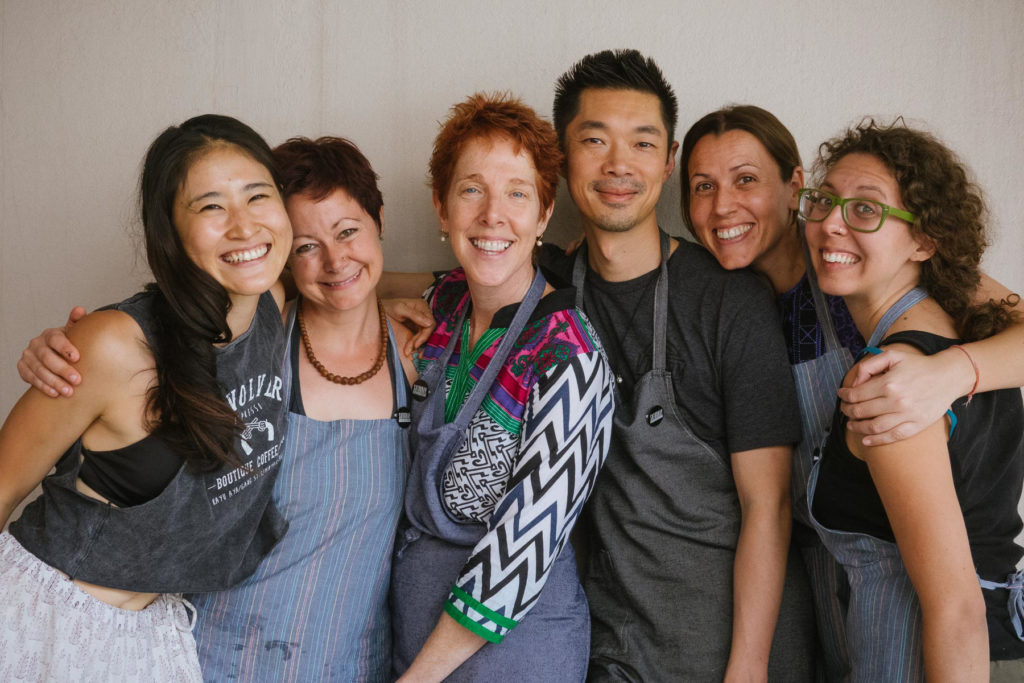
Tell us about the places you’ve visited in the past eight years. What brought you to these places and what is it about their cuisines, cultures and ingredients that resonate with you?
I started travelling eight years ago when my boyfriend at the time wanted to take a six month vacation with me. We started in Mysore, India, the birthplace and home of Ashtanga yoga and started practicing at the KPJAYI institute for 2 months with my teacher Saraswathi Jois. This experience led us to continue to travel and do yoga everywhere we could and when the time came for our trip to end, we extended it for another 4 and a half years; always travelling back to Mysore and always to practice Ashtanga yoga. At the end of 2014, my boyfriend and I split up and I decided that regardless of what happened, I needed to continue to travel and to continue my studies with yoga.
Over the past eight years, I have been very fortunate to visit many places across multiple countries, like India, Japan, USA, Spain, Vietnam, Shanghai, Thailand, Taiwan, Singapore, Kuala Lumpur, Manilla, New Zealand, Lisbon, Costa Rica, London and last but not least the Maldives. Half of these are places that I specifically chose to visit and the other half, occurred by way of friends and colleagues inviting me to visit or do workshops (food or yoga) in their respective cities.
This travel and these experiences continue to shape my knowledge of food, cultures and customs. Where we eat, when we eat, what we eat, how we eat, why we eat and with whom we eat are such interesting things to examine when we are travelling, but also on a daily basis.
My affinity with India in particular, is not only with yoga, but also with its rich and diverse styles of food. I began to discover that the majority of Indian food that I loved was home cooked food, made primarily by mothers and housewives. This food appeals to me because it is made fresh, with vegetables and quality ingredients bought daily from the market. It is the love and preparation that goes into these meals that makes the meal special, they are women who are sharing part of themselves, their culture, their customs and their stories all on a single plate.
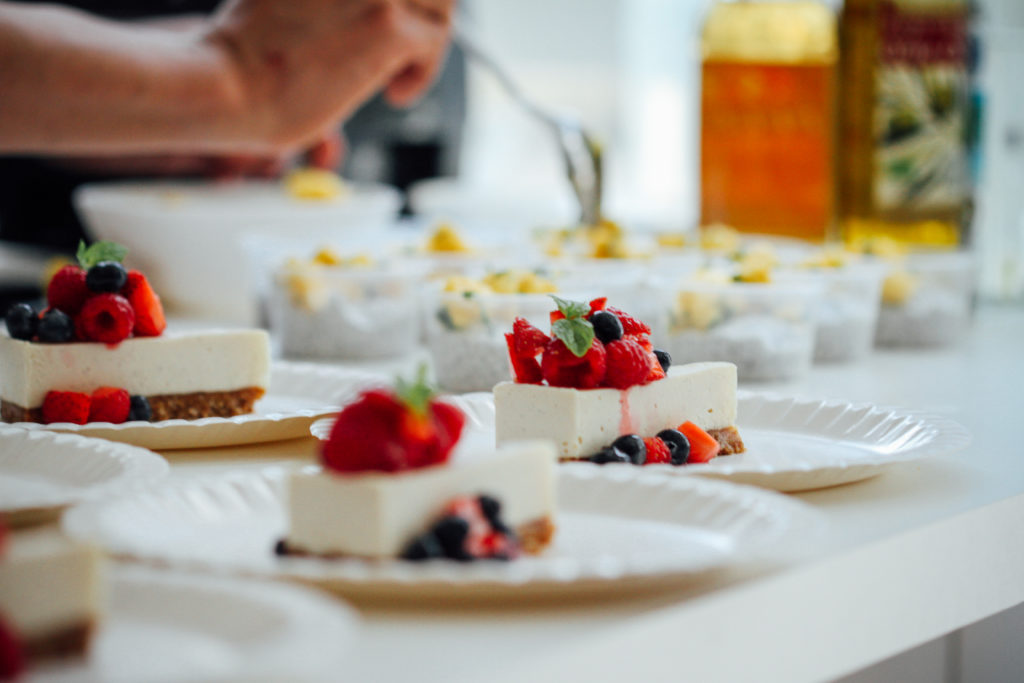
How did you come to work with food as an artistic medium?
I never set out to work with food as a medium as an artist. My major at art school was sculpture and installation. The themes I was exploring and am still interested in are the body, the senses, memory, temporality and the experience. Using food in artwork slowly happened because it was a way that I could express myself in a very immediate and tactile way. It gave me a starting point in which I could relate common ideas surrounding my identity, culture,memory and nostalgia.
My latest works at the HH Art Spaces in Goa, such as the Art of Experiential Eating and Sweet Risk, blur the line between art and food and and how it changes depending on the context you are in. It questions what constitutes a meal and asks the participant to do things and eat things they might not have or in a way that they are not used to. These works often employ foreign and sometimes uncommon ingredients to subvert the viewers’ preconceived notion of a meal or of dessert or of the experience of eating or sharing a meal.
The chefs who I am regularly drawn to are in fact artists, in my mind. It is their ability to create dishes which are not only delicious and beautiful, but also executed in a very thoughtful and poetic manner. In most cases it isn’t to make food just for the sake of it. Their craft reflects a process of understanding their ingredients and letting the ingredients speak for themselves in either an overt or understated way. It is this holistic approach and consideration to food and for the individual eating that I find beautiful, one that is mindful about the intention behind a dish or meal and using the process as a means to express their ideas, and with a bite and taste, live on in someone else’s experience. Possibly creating an impression or memory, to remember, forget, recall, archive or even to inspire.
